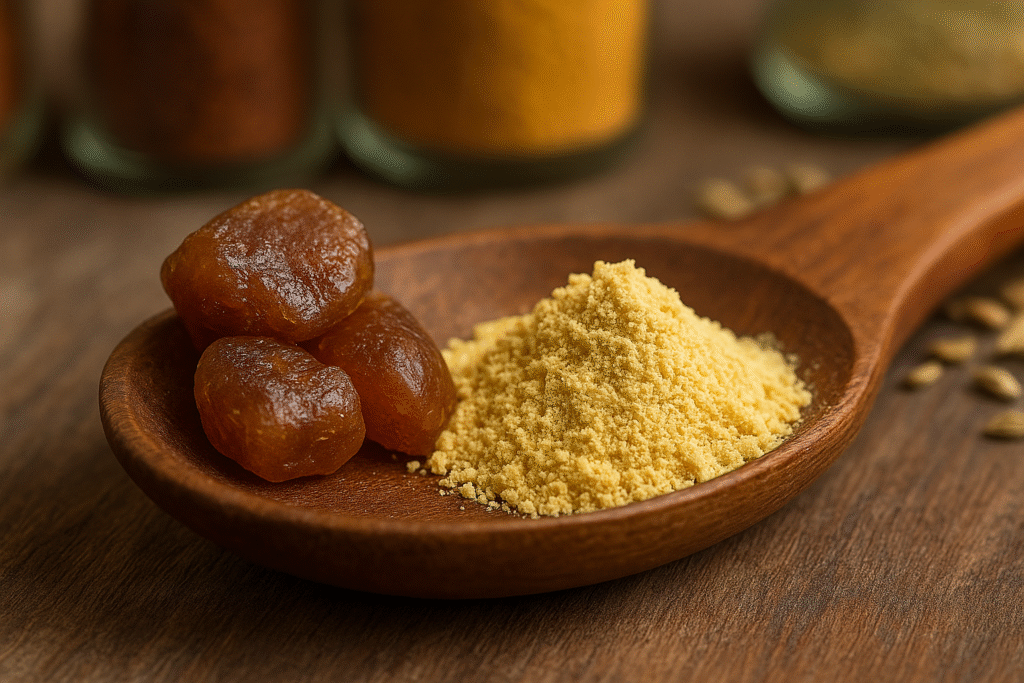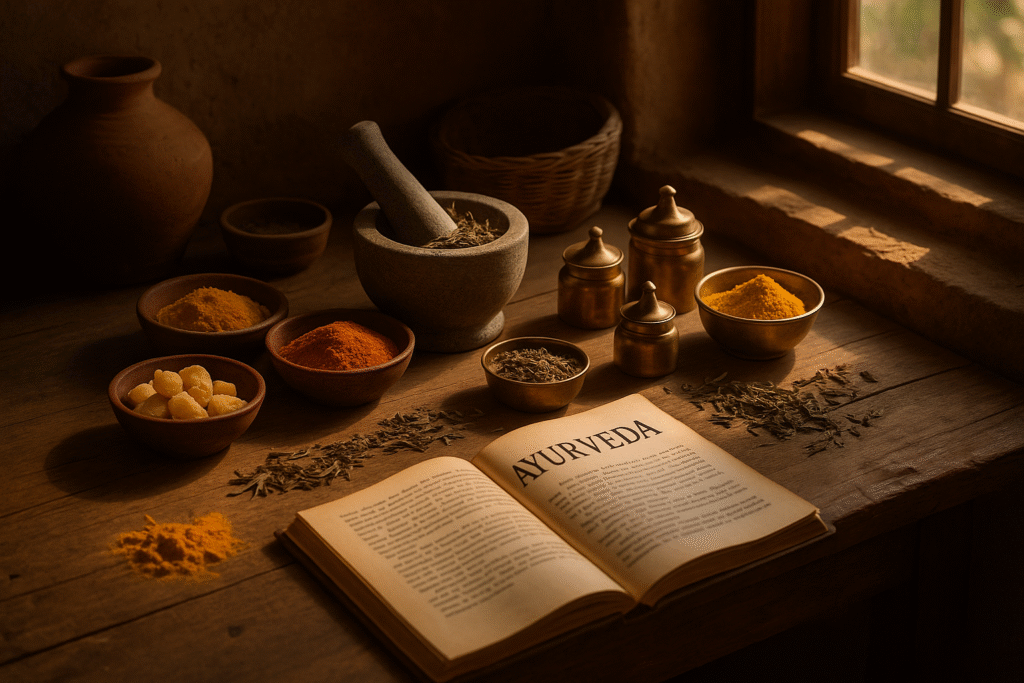Introduction: A Pinch of Hing, A World of Difference
It might have been possible for you to notice that as soon as you pop the lid off a container of hing (asafoetida), the aroma will fill your entire kitchen in mere seconds. Although it might be a very small quantity of the spice, hing not only gives an enormous taste to your dish but also aids in your digestion. Besides, there are different types of hing available in the market, which is Pure Hing and Bandhani Hing, how is it possible for you to be sure that you are making the right choice in terms of both cooking and your well-being?
This in-depth guide will analyze and present the whole thing you need to know about Pure Hing and Bandhani Hing, including the applications, health advantages and how to choose the best hing for your personal requirement.
What Is Hing? A Quick Refresher

Hing, which is commonly known as Asafoetida, is a product that is made from the resin of the Ferula plant, a plant that is native to Afghanistan and Iran. Its strong smell and the ability of aiding stomach digestion have been the reasons for its long-term use in Ayurveda and Indian cooking.
The moment you add hing into the hot oil, it starts to give off a very earthy and savory kind of smell and you can use it for flavoring dals, curries, vegetables, and so on. Besides that, it prevents bloating and acidity, thus qualifying it as the real ‘healer’ of the kitchen.
Generally, two kinds of hing are what you will see in Indian households — Pure Hing (Raw) and Bandhani Hing (Powdered Form).
Difference Between Pure Hing and Bandhani Hing
| Feature | Pure Hing (Raw Hing) | Bandhani Hing (Compounded Hing) |
|---|---|---|
| Form | unrefined and strongest form | Fine, easy-to-use powder |
| Aroma | Strong and intense | Milder and balanced |
| Flavor Strength | Highly concentrated | Smooth and subtle |
| Digestive Benefits | Very potent and fast-acting | Gentle and effective over time |
| Best For | Traditional dishes, Ayurvedic recipes | Daily cooking like dals & curries |
| Ease of Use | Needs to be crushed/dissolved | Ready to use instantly |
Pure Hing: Potent, Traditional & Therapeutic

Pure hing is asafoetida in its most unrefined and strongest form. It’s, so to say, the absolute Indian flavor and Ayurvedic health. Crushed Pure Hing is the way it is mainly sold, either as resin or small hard blocks.
Why It Works
Pure hing contains a lot of sulfur, which is the reason for its very strong and unpleasant smell and excellent digestive effects. Medical and cooking practices in India still have this natural product at their core, so that is why it has remained an integral part of Ayurvedic medicine and authentic Indian cooking.
Health Benefits
- Instant Digestive Relief: Natural sulfur compounds in hing provide quick relief from gas, bloating, and acidity.
- Boosts Appetite: Digestive enzymes are stimulated by hing which helps to increase appetite and enhance digestion.
- Promotes Gut Health: Hing helps to balance gut bacteria and supports the removal of toxins, thus keeping the digestive system clean and active.
- Anti-Inflammatory Effects: Hing calms irritation in the stomach and intestines, thus contributing to overall digestive comfort.
Best Uses
- South Indian sambar and rasam.
- Ayurvedic home remedies for digestion.
- Authentic regional dishes requiring strong hing flavor.
Bandhani Hing: Everyday Flavor with Balanced Benefits

Bandhani Hing (Compounded Hing) is a super-fine, ready-to-use mixed asafoetida powder — generally created by mixing the real pure hing with mild bulking agents like wheat flour or gum arabic. These substances diminish its strong scent and make it more suitable for everyday cooking.
Why it works
Bandhani Hing provides the perfect mixture of fragrance, taste, and convenience which makes it suitable for everyday kitchen use. It does not dominate but rather adds richness to the dishes and dissolves with other spices easily.
Health Benefits
- Reduces Gas and Indigestion: Bandhani Hing, while mild, is still an effective solution for gas and indigestion, thus aiding to a great deal in the preservation of gut health and in the promotion of proper digestion.
- Gentle Digestive Support with Regular Use: This spice, when used in cooking, becomes a friendly and helpful partner to the digestive system, thus, preventing discomfort after meals.
- Improves Nutrient Absorption: The nutrients intake of the body will be much more effective as a result of this enhancement.
- Perfect for Sensitive Stomachs: Hing’s goodness is all there without the sting of the resin’s pure form, thereby being easy on the stomach.
Best Uses
- Enhance the flavor of everyday dals, curries, and lentil.
- Enhance the flavor of sautéed vegetables and curries.
- Seasoning (tadka) in everyday meals
Pro Tip
Introduce Bandhani Hing to a hot oil or ghee before adding the balance of ingredients. When added this way, it releases its aroma nicely and becomes evenly distributed in the overall dish.
For Cooking: Which Hing Should You Choose?
In everyday cooking,
- Bandhani Hing is your favorite choice.
- It has a good measure, a milder flavor, and will mix in your dish softly without altering the colors or the richness of the flavors.
- Pure Hing is the best for uncommon recipes that aim to acquire the original taste – like rasam, hing chutney, or other traditional Ayurvedic recipes.
Verdict
- everyday convenience — Bandhani Hing is the choice.
- For special occasions and or when authentic cooking — then Pure Hing is warranted for its strong, traditional fragrance.

For Digestive Use – Which Hing is Better?
Based on digestion alone, Pure Hing (asafoetida) is the winner. Its strong sulfur compounds allow for faster relief from bloating, acidity, and flatulence. However, if you are more concerned about gentle, long-term digestibility through regular everyday meals, Bandhani Hing (asafoetida) is an excellent choice.
The Verdict:
- For quick relief → Pure Hing.
- For ongoing digestive health → Bandhani Hing.
Why Both Types of Hing are Necessary in Your Kitchen?
- Don’t consider one better than the other, You can think of both types of hing as a dynamic duo that each have their own purpose.
- Pure hing is for when you want that strong flavor kick, or want a quick digestive remedy.
- Bandhani hing is great to keep in your kitchen for regular cooking for extra flavor and digestive health.
- This will keep your kitchen both fragrant and healthy!

Ayurvedic Insight: Hing Beyond the Kitchen
Hing in Ayurveda is not simply a spice, but a digestive and detox herb called Hingu. It helps balance Vata dosha, which affects bloating and digestion, and is also used in Ayurvedic medicines for:
- Cough and cold
- Menstrual pain
- Gas and constipation
If consumed regularly and in small amounts it keeps your Agni strong and your gut balanced.
How to Identify Good Quality Hing

Color: The ideal color is golden brown, somewhere in between light and dark.
Aroma: An overwhelming, fresh smell is the proof of high quality.
Texture: Bands of Bandhani Hing are supposed to be of a very fine and uniform powder.
Packaging: The aroma will be preserved best in an airtight container.
Brand reputation: Select reliable brands that have a clear statement like “100% pure” or “premium quality Bandhani Hing” on the label.
So, why not keep both? After all, in the world of Indian cooking, a little hing can make a big difference — to both your taste buds and tummy!


